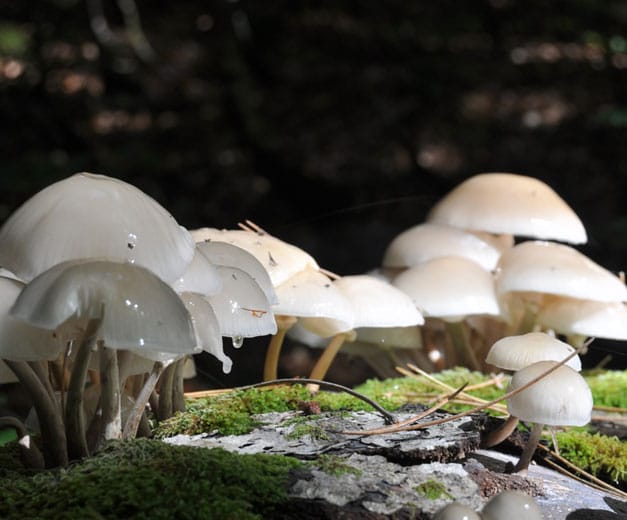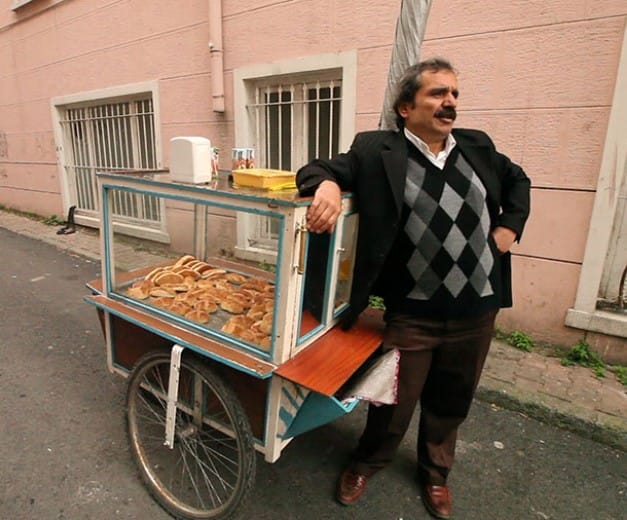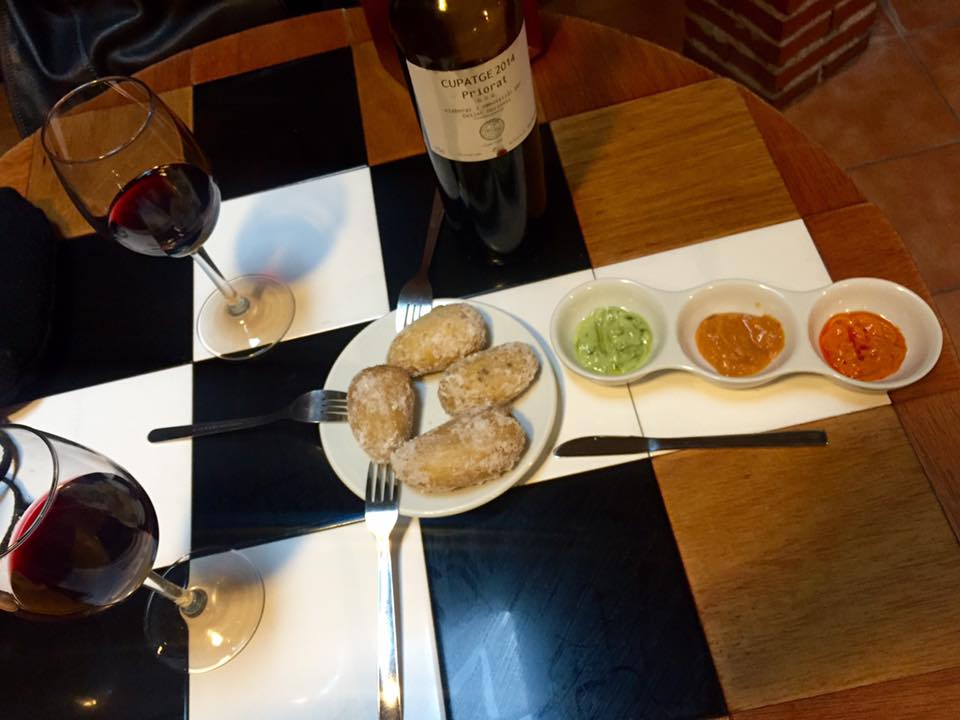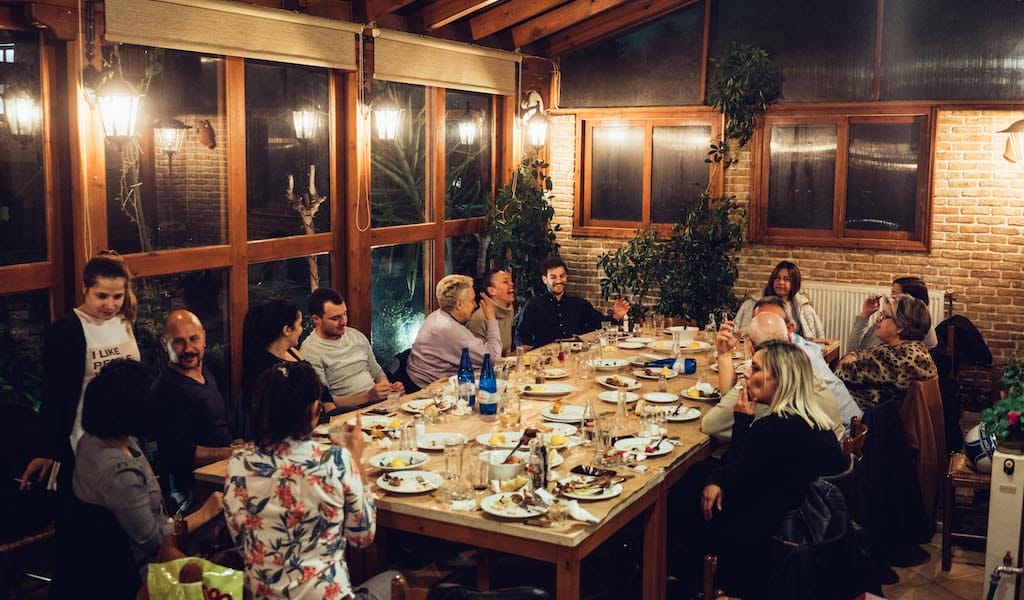Editor’s note: We are sorry to report that MushRoom has now closed.
For our second installment in Mushroom Week, we go to Athens, where locals, who have never been the biggest fans of fungus, are starting to come around to the pleasures of cooking and eating mushrooms.
It’s October and mushroom season in many parts of Europe, but if you were hoping for anything like Genoa’s Porcini Festival in Athens, you’re out of luck. But don’t despair: ‘shrooms, wild and cultivated, can be found; it just takes a little sleuthing.
Greeks, city dwellers at least, are notoriously wary of mushrooms, unlike their ancient ancestors. Scholars say that the hallucinogenic effects of the scarlet Amanita muscaria may have induced those bacchic frenzies among the followers of Dionysos – not wine, after all – as well as the life-changing visions experienced, but never revealed, during the Eleusinian Mysteries. But by the Byzantine era, the fear of being poisoned outweighed the pleasures of eating them. One 11th-century gentleman named Kekaumenos is said to have warned, “Do not eat fresh mushrooms; because of them many households remain deserted.”
His advice must have resonated, for when we first moved to Athens in the early 1970s, mushrooms were notable for their absence. Slimy, tasteless things in jars and cans existed – but little else. And when in triumph we finally found a box of fresh button mushrooms and brought it home, our housekeeper shuddered in horror. “I wouldn’t allow those things in my house. They’re dirty; they grow in manure.” (She used a less polite word.) Another American friend’s in-laws accused her of trying to poison them when she put a dish of mushrooms on the table.
Still, while you could never say that Greece is a mycophilic society – like Russia, Poland, France or Italy, for example – there have always been passionate foragers in the mountain areas and some of them are beginning to supply a handful of high-end grocers in Athens with dried and, more rarely, fresh chanterelles, morels, porcini and others. At the same time, the number of cultivated fungi on sale in shops and farmers markets is, well, mushrooming.
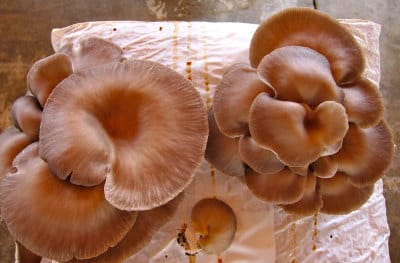 Apart from the familiar champignons, which now come in many sizes, Athenians can buy brown mushrooms, portobello, shiitake (Lentinula edodes) and oyster mushrooms (Pleurotus ostreatus), also in many sizes as well as filleted. Unlike button mushrooms, which do grow best in beds of earth containing treated horse manure, oyster mushrooms like to grow on the sides (plevro in Greek, pleuro in Latin) of trees (or containers of special substrate), in the way that ears (otus) stick out from the sides of our head, and in shapes reminiscent of crustaceans.
Apart from the familiar champignons, which now come in many sizes, Athenians can buy brown mushrooms, portobello, shiitake (Lentinula edodes) and oyster mushrooms (Pleurotus ostreatus), also in many sizes as well as filleted. Unlike button mushrooms, which do grow best in beds of earth containing treated horse manure, oyster mushrooms like to grow on the sides (plevro in Greek, pleuro in Latin) of trees (or containers of special substrate), in the way that ears (otus) stick out from the sides of our head, and in shapes reminiscent of crustaceans.
One company in particular deserves credit for the burgeoning interest in mushrooms, both cultivated and wild. Located in pastoral central Evia, it takes its name from the thickly forested but bald-capped mountain, Dirfys, above it. Dirfys is engaged in just about every phase of the mushroom business, starting with the compost or substrate in which the fungi are grown. After working for two summers on a mushroom farm in Bavaria, its founder Lefteris Lahouvaris was so excited by what he saw that he studied mycology at the Agricultural University of Athens and eventually set up his company with fellow agronomist Thanasis Mastroyiannis to produce substrate for oyster mushroom cultivation.
As he explained, “We practice the satellite system I saw working so well in Germany. We make the substrate from straw and clover grown in Thessaly, add mycelia [the threadlike vegetative part of a fungus] from France and sell it to other mushroom farmers. When we started in 2004, there were only four Pleurotus farmers in Greece; now there are 70 scattered all over the country.”
Naturally, Dirfys cultivates its own mushrooms at the same time, about 200 tons per year of oyster and 10,000 kg of shiitake in 21 growing rooms, which resemble airplane hangars. The oysters come in three sizes: small, about three to four days old, which can be eaten raw in salads; medium, for sautéing, sauces and grilling; and the very large, known as fileta, for grilling or barbecuing as you would the best sirloin.
But the Dirfys partners’ passion for mushrooms also extends to the wild kind. In 1998 they began to organize picking groups in Evia and Epirus in spring and fall, expanding to the Peloponnese and Kastoria, and they work with amateur truffle hunters in the Rhodopi mountains near the Bulgarian border to make their trophies available to connoisseurs. Some of the mushrooms they expect to find this fall – which has been ideal, both warm and wet – include Macrolepiota procera (parasol mushroom), Boletus edulis (porcini, whose name in Greek, Basilomanitaro, means “king of the mushrooms”), Fistulina hepatica (beefsteak fungus), Amanita caesarea (Caesar’s mushroom) and Cantharellus cibarius (chanterelle).
Unfortunately, only one shop, Makro Cash and Carry, stocks fresh wild mushrooms, but dried ones adorn the shelves of the Pantopoleio Mesogeiakis Diatrofis (Sofokleous 1, in central Athens), the Thanopoulos supermarket chain, some specialty delis in the northern suburbs and the Mega Alpha Beta at Ellinikon. Among the selection are shiitake, porcini, black trumpets, chanterelles, a “forest mix” and even strips of Ganoderma. Also known as reishi, these last look about as appetizing as brown Band-Aids. They are not to be eaten but make a healthful tisane.
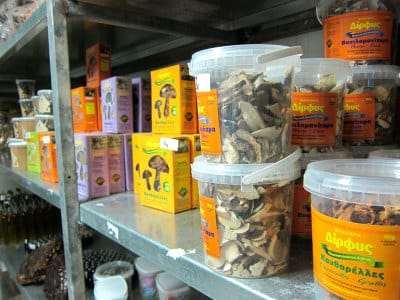 As for dining out, menus all over town feature cultivated mushrooms in various guises, but if you really want to binge on them, head to Glyfada. Just to show how far Athens has progressed in dispelling fungal phobia, a restaurant there is devoted almost exclusively to them. The name says it all. MushRoom (Grig. Lambrakis and Ag. Nikolaos 48, tel. +30 210 960 3943), which opened in 2013, boasts 20 varieties of fungus, served as salads, appetizers and main courses such as mushroom tagliatelle with a Naxos cheese; pork fillet with cream of quince and Amanita caesarea; peinirli (a rich, open pie) stuffed with mushrooms and prosciutto; risotto, of course; Black Angus steak with mushroom sauce; and, what sounds most tempting of all, a sauté of mixed wild fungi. The chef told us that they have suppliers all over Greece, especially the Peloponnese and Grevena.
As for dining out, menus all over town feature cultivated mushrooms in various guises, but if you really want to binge on them, head to Glyfada. Just to show how far Athens has progressed in dispelling fungal phobia, a restaurant there is devoted almost exclusively to them. The name says it all. MushRoom (Grig. Lambrakis and Ag. Nikolaos 48, tel. +30 210 960 3943), which opened in 2013, boasts 20 varieties of fungus, served as salads, appetizers and main courses such as mushroom tagliatelle with a Naxos cheese; pork fillet with cream of quince and Amanita caesarea; peinirli (a rich, open pie) stuffed with mushrooms and prosciutto; risotto, of course; Black Angus steak with mushroom sauce; and, what sounds most tempting of all, a sauté of mixed wild fungi. The chef told us that they have suppliers all over Greece, especially the Peloponnese and Grevena.
If that menu doesn’t satisfy your mushroom mania, why not travel to Grevena yourself? This small city in southern Epirus, not far from the famed monasteries at Meteora, is the self-proclaimed mushroom capital of Greece. Instead of busts and statues of ancient or revolutionary heroes, its squares and fountains sport sculptures of wild fungi. Every other shop sells mushroom products, including pasta, trahana (a traditional grain-like pasta made from cracked wheat, bulgur or wheat and buttermilk, yogurt or milk), soups and even sweets – mushrooms preserved in syrup.
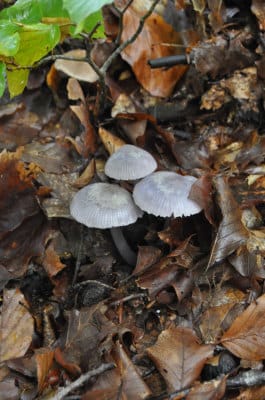 Every restaurant there possesses a long list of glorious mushroom recipes. On a spring visit three years ago, we feasted on them fried, grilled, breaded, creamed; in pasta, pizza, omelets and stews; and accompanied by good to superior brousko, red barrel wine.
Every restaurant there possesses a long list of glorious mushroom recipes. On a spring visit three years ago, we feasted on them fried, grilled, breaded, creamed; in pasta, pizza, omelets and stews; and accompanied by good to superior brousko, red barrel wine.
Our guides told us there were some 90 kinds of edible mushrooms to choose from among the more than 2,000 scattered in these forests, which belong to Valia Calda National Park. Their boss, Apostolis (Tolis) Dianellos of Overland Tours, said he’d been poisoned three times. But he remains an aficionado. He will also share his enthusiasm and expertise if you can get a group together.
Finally, just to prove that Greeks are really becoming mushroom eaters, the October issue of Gastronomos, the food magazine of the premier Athens newspaper, Kathimerini, is devoted to none other than mushrooms – how to find, clean and cook them.
Feasting on mushrooms is clearly an idea whose time has finally come to Athens.
Published on October 21, 2014
Related stories
January 21, 2016
IstanbulMetin Akdemir is a filmmaker based in Istanbul. In 2011 he made a short film about street vendors in the city. The film, “Ben Geldim Gidiyorum” (“I’ve Come and I’m Gone”), won several awards in Turkish and international film festivals, and we think it’s a very valuable piece of work that captures a side of…
July 19, 2016
BarcelonaSome color from the Canary Islands: papas with mojo picón (green pepper, red bell pepper and goat cheese) can be found in our Barcelona Bodegas walk!
March 22, 2019
AthensAt first glance, Manolis, located in a quiet, residential corner of Chalandri, a neighborhood far from the bustling center of Athens, looks like your typical Greek family taverna: the large dining room is clad in wood paneling and brick, with various old-fashioned paintings, drawings and old photographs covering the walls. But if you look a…







































